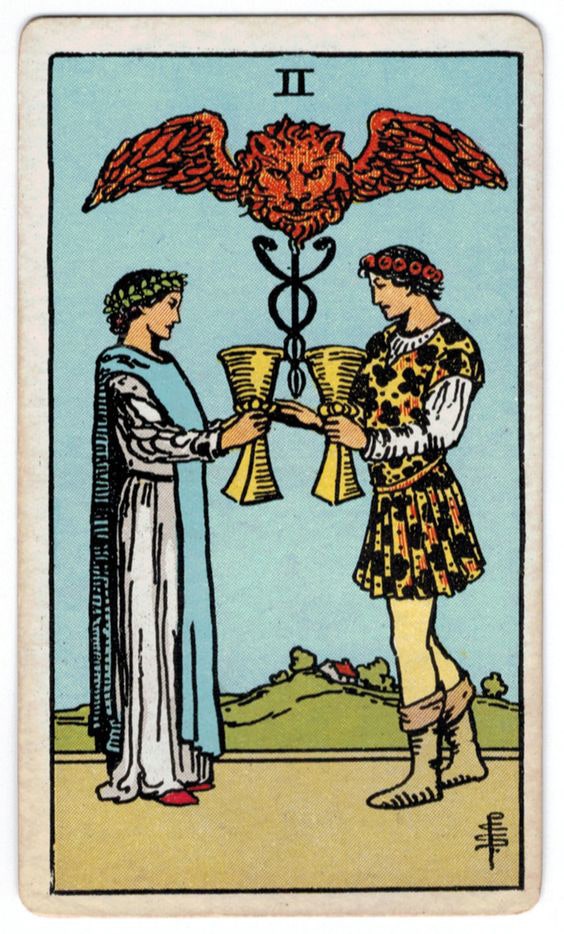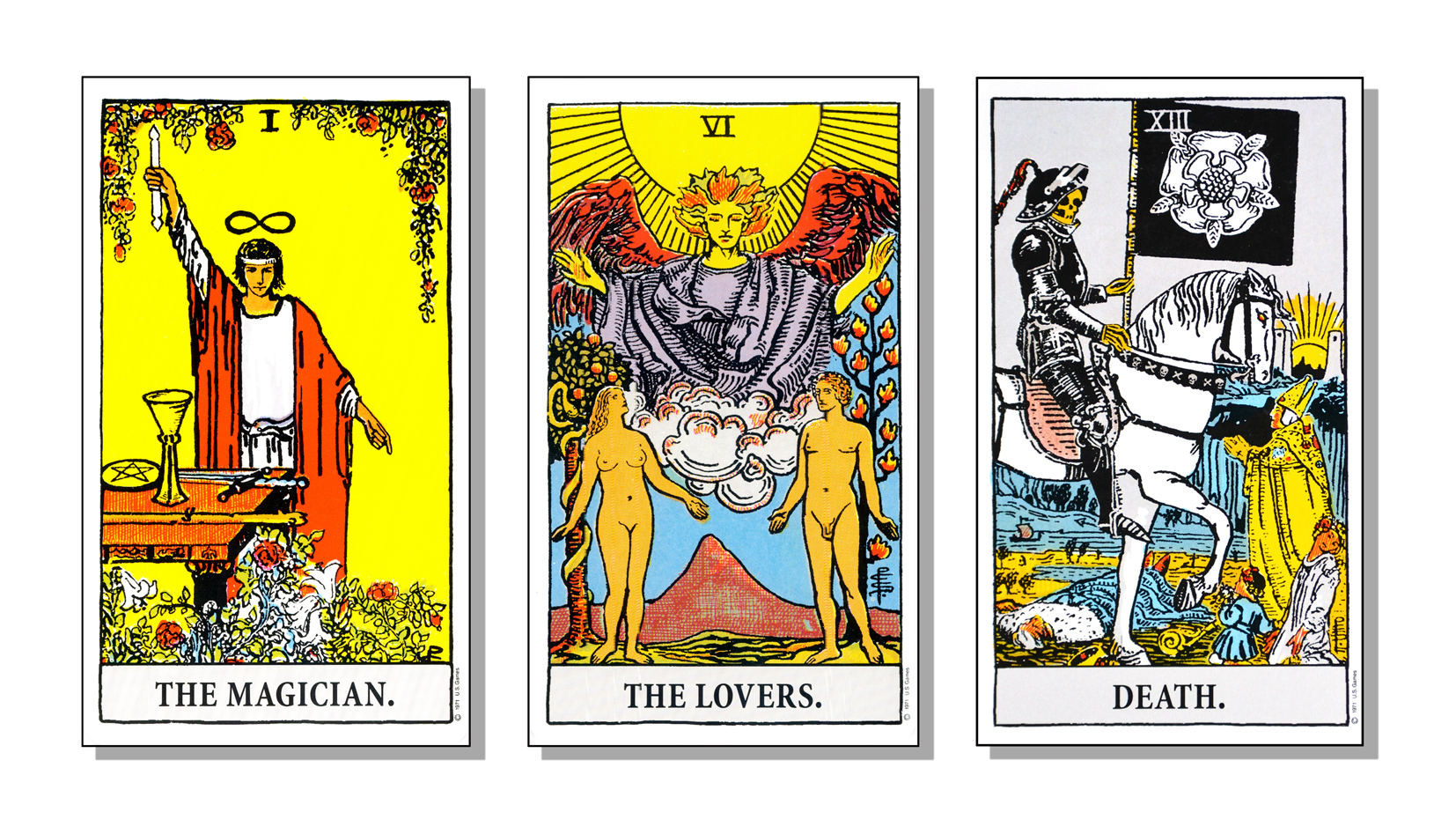In the fascinating world of tarot cards, there exists a lingering question: do these mystical cards hold the power to represent individuals? As you delve into the realm of tarot, you may find yourself pondering this very question. Whether you are a seasoned tarot enthusiast or a newcomer to the art, the tarot’s ability to reflect and connect with people remains a captivating topic of exploration. Let’s embark on a journey into the mysterious world of tarot and uncover the truth behind the question – do tarot cards truly represent people?
The History of Tarot Cards
Origin of Tarot Cards
Tarot cards have a rich and fascinating history that dates back centuries. While the exact origin of tarot cards is still debated by historians, it is widely believed that they originated in the 15th century in Europe. The earliest known tarot decks were created in Italy, specifically in the regions of Milan, Ferrara, and Bologna.
The first tarot cards were not initially used for divination purposes, but rather as playing cards for games. These early decks, known as tarocchi or tarocchini, consisted of the traditional four suits seen in modern playing cards – cups, swords, coins, and batons – as well as a fifth suit known as the major arcana. The major arcana consisted of 22 symbolic cards, each depicting a different archetype or significant figure.
Evolution of Tarot Cards
Over time, as the popularity of tarot cards grew, their use expanded beyond mere games. In the 18th century, tarot cards began to be associated with esoteric and occult practices. This shift in perception led to the emergence of tarot cards as a tool for divination and spiritual guidance.
In the late 19th and early 20th centuries, influential occultists such as Arthur Edward Waite and Pamela Colman Smith contributed to the evolution of tarot cards. Waite, along with Smith as the illustrator, created the Rider-Waite-Smith tarot deck, which is still widely used today. This deck introduced new symbolism and imagery, making it more accessible and relatable to a broader audience.
Since then, numerous tarot decks have been created, each with its own unique interpretation and artistic style. Tarot cards have become ingrained in popular culture and are now recognized worldwide as a powerful tool for self-reflection, guidance, and personal growth.
Use of Tarot Cards in Divination
One of the most well-known applications of tarot cards is their use in divination. Divination, also known as fortune-telling or oracle reading, is the practice of seeking insight or knowledge about the future or the unknown.
When using tarot cards for divination, the reader will typically shuffle the deck while focusing on a specific question or area of life they seek guidance in. The cards are then laid out in a particular pattern, known as a spread, and each card’s placement and symbolism are interpreted to gain insight into the question or situation at hand.
Tarot readers may utilize a variety of spreads, ranging from simple one-card spreads to more complex layouts such as the Celtic Cross spread. The interpretation of the cards relies on the reader’s intuition, knowledge of the card meanings, and their connection to the symbols and imagery within the deck.
Understanding Tarot Cards
Structure of a Tarot Deck
A traditional tarot deck consists of 78 cards, divided into two main sections: the major arcana and the minor arcana. Each card in the deck carries its own unique meaning and symbolism, contributing to the overall message and interpretation of a reading.
The major arcana consists of 22 cards, numbered from 0 to 21, with each card representing a significant archetype or life experience. These cards often depict powerful archetypal figures such as The Fool, The Magician, The High Priestess, and The World. The major arcana signifies major life events, spiritual lessons, and transformative experiences.
The minor arcana, on the other hand, is divided into four suits – cups, swords, coins (also known as pentacles or discs), and wands (also known as staves or rods). Each suit contains 14 cards, starting from Ace to ten, followed by four court cards – Page, Knight, Queen, and King. The minor arcana represents the everyday aspects of life and the challenges and opportunities we encounter.
Major Arcana
The major arcana cards hold significant influence and are often seen as the heart and soul of a tarot reading. Each card within the major arcana carries its own unique symbolism and represents a particular life lesson or archetype.
For example, The Fool card symbolizes new beginnings, taking risks, and embracing the unknown. The Magician represents personal power, manifestation, and the ability to harness one’s skills and resources. The High Priestess signifies intuition, spirituality, and the exploration of the subconscious.
When a major arcana card appears in a tarot reading, it indicates profound and transformative energies at play in the person’s life. These cards invite self-reflection and offer guidance on the deeper aspects of one’s journey.
Minor Arcana
The minor arcana cards provide insight into the more practical and everyday aspects of life. Each suit within the minor arcana corresponds to a different element and represents different areas of life and personality traits.
The suit of cups is associated with emotions, relationships, and creativity. The swords represent thoughts, intellect, and challenges. The coins refer to material possessions, finances, and practical matters. The wands represent inspiration, passion, and personal growth.
Each card within the minor arcana has its unique symbolism, and its placement within a reading offers guidance and clarity on specific areas of the person’s life. They shed light on the challenges, opportunities, and influences that shape our daily experiences.
Interpretation of Tarot Cards
Interpreting tarot cards requires a combination of intuition, knowledge of card meanings, and a deep understanding of the symbols and imagery within the deck. It is essential to remember that tarot cards do not provide concrete answers or predictions but rather serve as a tool for self-reflection and guidance.
When interpreting a tarot reading, it is crucial to consider the cards’ position within the spread, their relationship to each other, and the overall energy and theme that emerges. A skilled reader also pays attention to their own intuition, as it can provide additional insights and personal connections to the cards.
Tarot card interpretation is a uniquely personal process, and different readers may have their own approaches and perspectives. It is this diversity and subjectivity that make tarot readings such a powerful and meaningful experience for individuals seeking guidance and self-discovery.
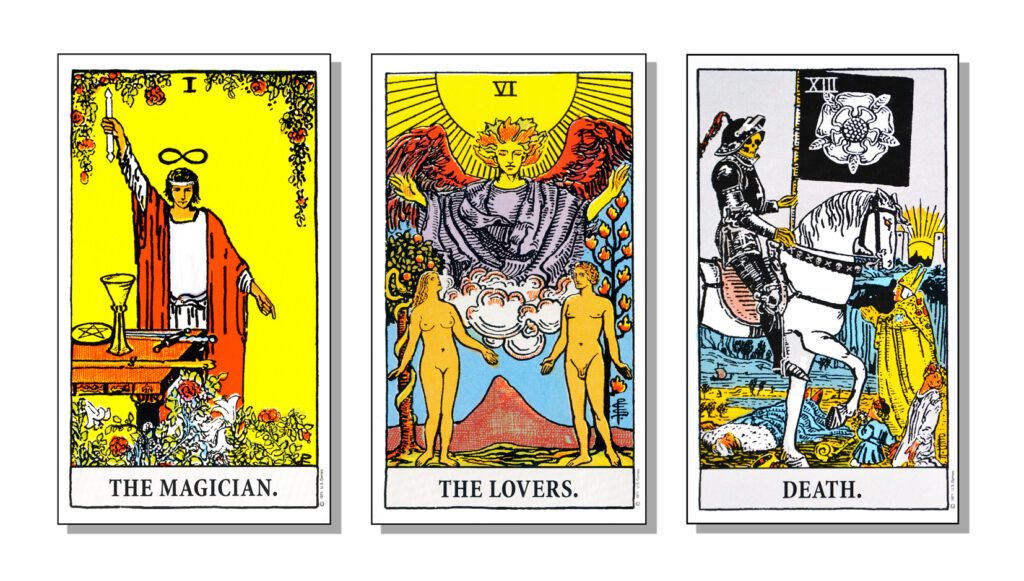
The Role of Tarot Cards
Psychological Perspective
From a psychological perspective, tarot cards serve as a tool for self-reflection and introspection. They provide individuals with the opportunity to explore their thoughts, emotions, and inner desires in a structured and symbolic way.
Engaging with tarot cards can offer valuable insights into one’s subconscious mind and bring awareness to hidden patterns, fears, and aspirations. By reflecting on the archetypal images and themes within the cards, individuals can gain a deeper understanding of themselves and their own personal journeys.
Tarot readings can be particularly beneficial in times of transition or when facing uncertainty. They provide a sense of empowerment by offering a different perspective, enabling individuals to explore various possibilities and potential outcomes.
Spiritual Perspective
From a spiritual perspective, tarot cards hold a deeper connection to the divine and the unseen realms. Many believe that the cards act as a conduit for spiritual guidance and insight from higher powers or universal energies.
Tarot readings can help individuals connect with their higher selves, spirit guides, or guardian angels. The symbols and archetypes within the cards serve as a language through which these spiritual entities communicate and provide guidance.
Tarot cards are often used in spiritual practices such as meditation, ritual work, or manifestation ceremonies. They can deepen a person’s connection to their spirituality, enhance their intuition, and foster a sense of trust in the larger forces at play in their lives.
Energetic Perspective
From an energetic perspective, tarot cards are seen as vessels of energy and intention. It is believed that each card carries its unique vibration and can influence the energy field of the individual engaging with them.
When using tarot cards, individuals can consciously direct their thoughts and intentions towards specific areas of their life. By focusing their energy on the desired outcome or intention, they can harness the cards’ energetic properties to manifest their goals or bring about positive change.
Tarot readings can also help individuals uncover energetic blockages or imbalances within themselves. The cards can highlight areas of resistance or areas that require healing and bring them into conscious awareness. By acknowledging and addressing these energetic aspects, individuals can work towards restoring balance and harmony in their lives.
Tarot Cards and Personal Development
Self-Reflection and Insight
Tarot cards are an invaluable tool for self-reflection and gaining insight into oneself. Through engaging with the archetypes and symbols within the cards, individuals can explore their own thoughts, emotions, and experiences in a safe and structured manner.
Tarot readings offer a space for individuals to ask themselves meaningful questions and receive guidance that resonates with their current situation. They encourage individuals to pause, reflect, and deepen their understanding of their own desires, fears, and aspirations.
By regularly engaging with tarot cards for self-reflection, individuals can develop a stronger sense of self-awareness, which can positively impact their personal growth and overall well-being.
Gaining Clarity and Guidance
In times of confusion or uncertainty, tarot cards can provide much-needed clarity and guidance. They offer a different perspective on the challenges and opportunities that present themselves in an individual’s life.
Tarot readings provide individuals with a space to seek answers to their burning questions or gain insight into a particular decision they need to make. The cards can shed light on potential outcomes, hidden influences, or personal biases that may be affecting their judgment.
By approaching tarot cards with an open mind and a genuine desire for guidance, individuals can tap into the wisdom and guidance that the cards hold. This clarity can help them make more informed decisions and navigate life’s challenges with greater ease and confidence.
Exploring Archetypes and Personal Growth
Tarot cards are intricately linked to archetypes – universal symbols and patterns that are present in every society and culture. Through engaging with the archetypes depicted in the cards, individuals can explore different facets of their own personality and potential.
Tarot readings allow individuals to tap into the collective unconscious and access the wisdom and lessons of the archetypes. By understanding and embracing the archetypes that resonate with them, individuals can gain a deeper understanding of their own strengths, weaknesses, and aspirations.
Engaging with tarot cards as a tool for personal growth enables individuals to embark on a journey of self-discovery and self-actualization. It encourages them to embrace their authentic selves and to strive for personal transformation and fulfillment.
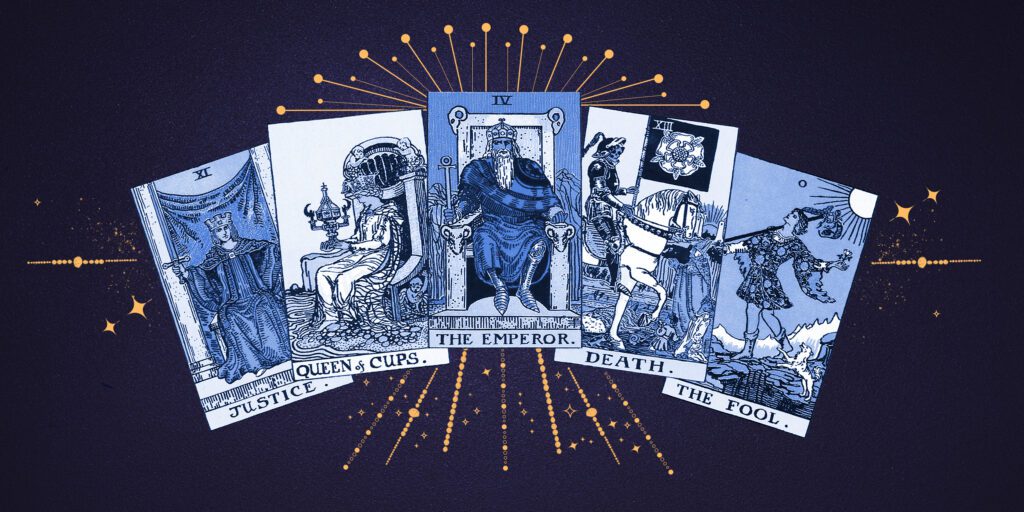
Using Tarot Cards for Others
Reading Tarot Cards for Friends and Family
Reading tarot cards for friends and family can be a meaningful and enriching experience for both the reader and the recipient of the reading. It offers a unique opportunity to deepen connections, provide guidance, and offer support during challenging or uncertain times.
When reading tarot cards for friends and family, it is important to approach the process with empathy, compassion, and respect for boundaries. It is crucial to create a safe and comfortable space for the individual receiving the reading, allowing them to share openly and honestly.
As the reader, it is essential to listen actively, validate the individual’s experiences, and offer guidance without imposing your own views or judgments. Tarot readings for friends and family can strengthen bonds, foster deeper understanding, and provide a sense of comfort and reassurance.
Professional Tarot Card Reading
Professional tarot card reading involves offering tarot readings as a service to clients seeking guidance, insight, or support. Professional tarot readers often undergo training, develop their own unique reading style, and adhere to a code of ethics to ensure a responsible and respectful approach to their work.
A professional tarot reading goes beyond simply interpreting the cards; it involves actively listening to the client’s concerns, providing a safe and nonjudgmental space, and offering guidance tailored to their specific needs.
Professional tarot readers understand the importance of maintaining client confidentiality, respecting personal boundaries, and providing unbiased and ethical guidance. They utilize their knowledge of tarot card meanings, intuition, and their ability to connect with clients to provide meaningful and transformative experiences.
Ethical Considerations in Tarot Card Readings
Tarot card readings, whether informal or professional, require careful consideration of ethical guidelines. It is crucial to approach readings with integrity, respect, and a genuine desire to serve the highest good of the individual seeking guidance.
Ethical considerations in tarot card readings include obtaining informed consent, respecting client confidentiality, providing clear and honest communication about the limitations of tarot cards, and refraining from making predictions that may cause unnecessary harm or instill fear.
As a tarot reader, it is important to recognize and acknowledge your own limitations and limitations of the cards. It is crucial to guide clients to take responsibility for their own choices and decisions, ensuring that they understand that the messages they receive from a tarot reading are ultimately tools for self-reflection and personal growth.
Interpreting Tarot Cards
Symbols and Imagery
The symbols and imagery within tarot cards play a significant role in their interpretation. Each card is rich in symbolic language, archetypal figures, and visual cues that contribute to its overall meaning and message.
When interpreting tarot cards, it is important to consider the context of the symbols and how they relate to the question or situation at hand. Symbols such as flowers, animals, crowns, or specific colors can provide additional layers of meaning and insight.
Tarot readers often develop their own personal associations with the symbols within the cards, drawing on their knowledge, intuition, and connection to the cards to offer unique and nuanced interpretations.
Intuition and Personal Connection
Intuition is a fundamental aspect of tarot card interpretation. While knowledge of card meanings is essential, trusting one’s intuition and personal connection to the cards is equally important.
Intuition allows the reader to tap into their own inner knowing and wisdom, enhancing their ability to interpret the cards in a way that resonates with the individual seeking guidance. Intuition can reveal subtleties and nuances within the cards that may not be readily apparent through logical analysis alone.
Developing a personal connection to the cards is a process that takes time and practice. It involves spending time with the deck, engaging in personal readings, and reflecting on the cards’ messages and insights. This connection strengthens the reader’s intuition and enhances their ability to provide meaningful and accurate interpretations.
Combining Multiple Cards
One of the strengths of tarot card readings is the ability to combine multiple cards to gain a more comprehensive understanding of a situation or question. The cards within a spread influence and interact with each other, creating a narrative or story.
When combining multiple cards, tarot readers consider the relationships between the cards – how they complement, support, or contrast each other. The position of the cards within the spread also provides valuable insights into their overall significance and influence.
Combining multiple cards allows for a more nuanced interpretation, offering a more complete picture of the energies at play and the potential outcomes. It encourages a holistic approach to understanding the situation and invites individuals to consider different perspectives and possibilities.
Reversed Cards and their Meanings
In tarot card readings, the orientation of the cards can hold significance. When a card appears upside down, it is considered to be in a reversed position. Reversed cards offer their unique meanings, often adding depth and nuance to the interpretation.
Reversed cards can indicate blocked energy, hidden obstacles, or challenges in a particular area of life. They invite individuals to consider alternative approaches or perspectives, encouraging them to explore untapped resources or seek inner alignment.
The interpretation of a reversed card can vary depending on the reader’s personal associations and the overall context of the reading. It is essential to approach reversed cards with an open mind and view them as opportunities for growth and self-reflection.
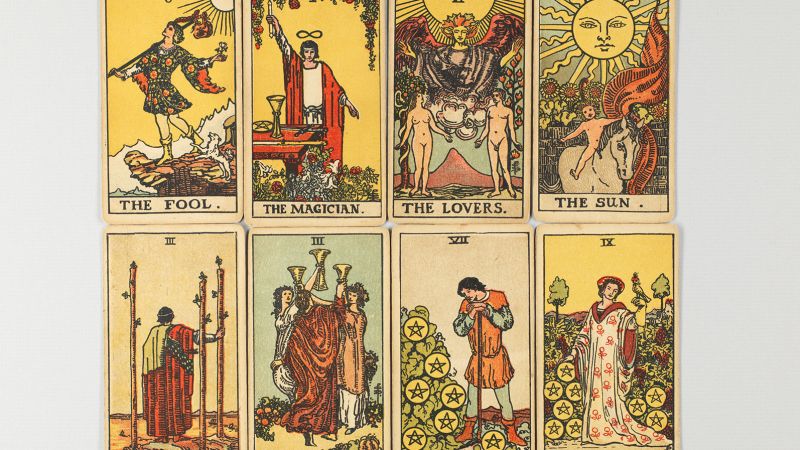
Different Tarot Card Spreads
Single Card Spread
The single card spread is one of the simplest and most versatile tarot card spreads. It involves drawing a single card and focusing on its message and symbolism.
The single card spread is suitable for quick, straightforward questions or for gaining daily insights and guidance. The card drawn can offer clarity, inspiration, or a new perspective on a particular area of life.
This spread is particularly useful for those new to tarot or for individuals seeking a quick and concise answer to a specific question.
Three-Card Spread
The three-card spread is a popular tarot card spread that provides past, present, and future insights into a particular situation or question.
The first card represents the past and sheds light on the influences or experiences that have led to the current situation. The second card represents the present and offers insights into the current energies and challenges at hand. The third card represents the future and provides guidance or potential outcomes.
The three-card spread is versatile and can be adapted to various questions or areas of life. It offers a concise yet comprehensive understanding of a situation or provides guidance on the next steps to take.
Celtic Cross Spread
The Celtic Cross spread is one of the most well-known and comprehensive tarot card spreads. It consists of ten cards, each representing different aspects of the individual’s current situation and potential outcomes.
The Celtic Cross spread offers a detailed analysis of a question or situation, delving into the underlying influences, challenges, and potential resolutions.
The first card represents the present situation, while the second card crosses it, shedding light on the immediate challenge or influencing factor. The third card represents the subconscious influences, and the fourth card focuses on the past experiences that have led to the current situation.
The remaining cards provide insight into various aspects, such as the external influences, hopes and fears, and potential outcomes. The Celtic Cross spread offers a comprehensive analysis and guidance on a wide range of questions or concerns.
Relationship Spread
The relationship spread is designed specifically to explore matters of the heart and relationships. It provides insights into the dynamics, challenges, and potential outcomes within a romantic relationship, friendship, or family connection.
The spread typically consists of cards representing each individual in the relationship, the overall energy or theme of the relationship, potential challenges or obstacles, and guidance or potential outcomes.
This spread encourages individuals to reflect on their own desires, needs, and expectations within the relationship, as well as gain insight into the other person’s perspective. It offers guidance on how to navigate challenges, communicate effectively, and foster a deeper connection.
Career Spread
The career spread focuses on matters related to one’s professional life, career path, or business endeavors. It offers insights into an individual’s strengths, challenges, potential opportunities, and guidance on achieving career goals.
This spread typically includes cards representing the individual’s current career situation, their strengths, areas for personal growth, potential challenges, and guidance or outcomes related to career advancement or new opportunities.
The career spread empowers individuals to gain clarity and confidence in their professional aspirations. It encourages self-reflection, strategic thinking, and a proactive approach to career development.
Decision-Making Spread
The decision-making spread is designed to assist individuals in making informed choices or decisions. It offers insights into the potential outcomes, consequences, and influences related to a specific decision.
This spread typically involves cards representing the different options or paths available, the potential outcomes or consequences of each choice, and guidance or insights to support decision-making.
The decision-making spread encourages individuals to explore their options thoroughly, consider the potential outcomes and consequences, and trust their intuition when making choices. It offers a structured approach to decision-making and facilitates a deeper understanding of the factors at play.
Tarot Cards and Relationships
Love and Romance
Tarot cards offer valuable insights and guidance when it comes to matters of love and romance. Whether individuals are seeking new love, navigating a current relationship, or healing from a past one, tarot cards can shed light on the dynamics, challenges, and potentials within their romantic connections.
Tarot readings can provide clarity on the individual’s desires, fears, and expectations within a relationship. They highlight potential growth areas, communication challenges, or hidden dynamics that may be affecting the overall harmony and well-being of the relationship.
Tarot cards also offer guidance on how individuals can nurture their own self-love and attract healthy and fulfilling partnerships. They provide insights into personal growth, healing, and the importance of self-awareness within the realm of love and romance.
Friendships and Connections
Tarot cards can also be a valuable tool for exploring and understanding friendships and connections. They can shed light on the qualities individuals seek in their friends, potential challenges or conflicts within friendships, and the overall energy and compatibility between individuals.
Tarot readings can offer guidance on building and nurturing healthy and supportive friendships. They highlight the importance of mutual respect, communication, and the shared values and interests that form the foundation of strong friendships.
Tarot cards can also help individuals navigate conflicts or challenges within their friendships, offering insights into potential resolutions or the need for healthy boundaries. By actively engaging with the messages and guidance within the cards, individuals can foster more fulfilling and meaningful connections.
Family Dynamics
Family dynamics can be complex and dynamic, and tarot cards can provide valuable insights into these relationships. Tarot readings can shed light on family patterns, unresolved issues, and potential areas for healing within family connections.
Tarot cards can offer guidance on how to improve communication, foster emotional understanding, and navigate challenging dynamics within the family. They encourage individuals to embrace forgiveness, compassion, and empathy as they strive to build healthier and more harmonious familial relationships.
Tarot readings can also provide a sense of closure or healing for individuals who have experienced strained or difficult family relationships. They offer opportunities for insight and understanding, paving the way for personal growth and the development of new narratives within the family.
Understanding Relationship Challenges
Tarot cards can be instrumental in understanding and overcoming relationship challenges. They offer a different perspective on the underlying dynamics, patterns, and influences that may be contributing to the difficulties within a relationship.
Tarot readings can shed light on the individual’s role within the relationship, their own fears, expectations, or areas for personal growth. They can also offer guidance on how to address issues such as communication breakdowns, trust issues, or emotional barriers.
Tarot cards encourage individuals to take a proactive approach to relationship challenges, offering insights into potential solutions, necessary compromises, or the need for additional support, such as counseling or therapy. Ultimately, tarot readings empower individuals to reflect on their own behaviors, dynamics, and choices within relationships, fostering personal growth and the possibility of healthier connections.
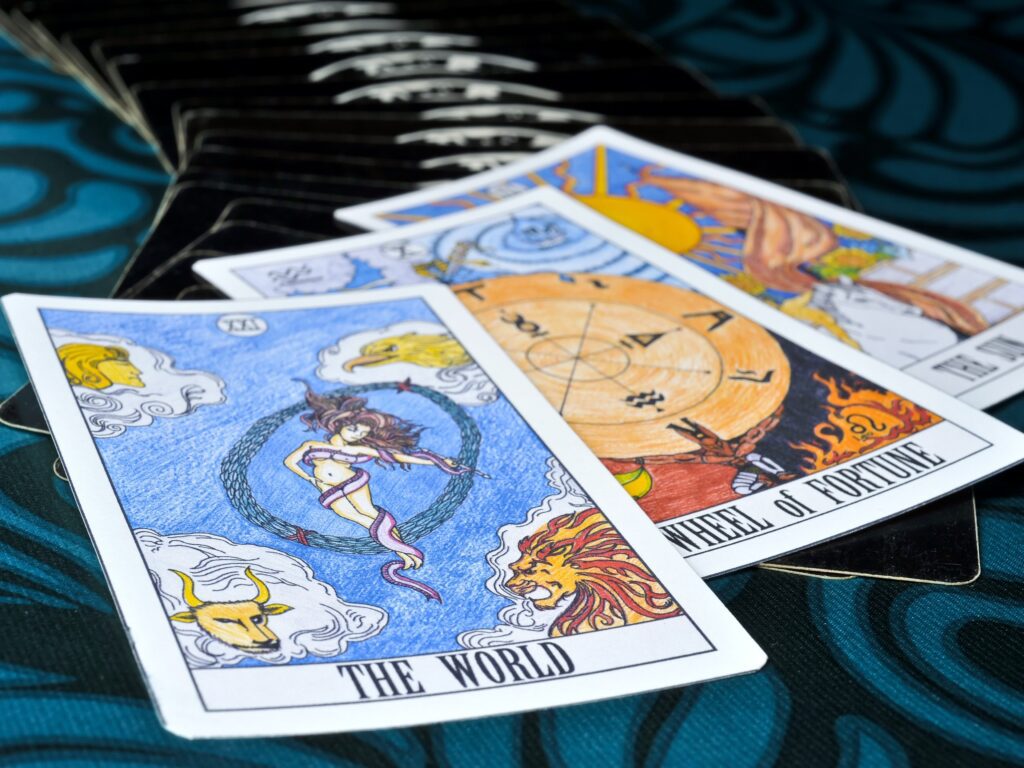
Common Misconceptions about Tarot Cards
Tarot Cards Predict the Future
One of the most prevalent misconceptions about tarot cards is that they have the ability to predict the future with certainty. While tarot cards can offer guidance and insights into potential outcomes or paths, they do not provide definitive predictions.
Tarot cards operate within the realm of probability and free will. They reflect the current energies, influences, and choices of an individual, offering guidance on potential outcomes based on their current trajectory.
It is important to approach tarot readings with an open mind and understand that the messages received are a culmination of various factors and possibilities. Tarot cards empower individuals to make conscious choices and take responsibility for their own lives rather than relying solely on outside predictions.
Tarot Cards Have Negative Influences
Another common misconception is that tarot cards have negative or harmful influences. In reality, tarot cards are tools for self-reflection and guidance and do not possess any inherent negative qualities.
The interpretation of tarot cards is subjective and depends on the reader’s connection to the cards, their intuitive abilities, and their understanding of the card meanings. Tarot cards reflect the energies and themes within an individual’s life, offering insight and perspectives that can lead to personal growth and positive change.
It is vital to approach tarot cards with an open and receptive mindset, allowing the cards to provide guidance and support in navigating life’s challenges. When used responsibly and ethically, tarot cards can be powerful tools for self-empowerment, healing, and personal transformation.
Only Certain People Can Read Tarot Cards
Another misconception is that only certain individuals possess the ability to read tarot cards. In reality, anyone can learn to read tarot cards with practice, dedication, and a genuine interest in the cards’ symbolism and messages.
While some individuals may have a natural affinity or intuitive connection with tarot cards, tarot reading is a skill that can be cultivated and developed over time. There are numerous resources, books, and courses available to help individuals deepen their understanding of tarot symbolism and interpretation.
Tarot cards are a reflection of the human experience and archetypal patterns that are present within all of us. With an open mind and a willingness to learn, anyone can engage with tarot cards and benefit from the guidance and insights they have to offer.
Conclusion
Tarot cards have a rich and diverse history, rooted in ancient traditions and beliefs. From their humble beginnings as playing cards to their current role as tools for self-reflection, guidance, and personal growth, tarot cards have evolved into powerful instruments of transformation.
The understanding of tarot cards involves exploring their structure, symbolism, and interpretation. Tarot cards hold relevance and significance from psychological, spiritual, and energetic perspectives, offering insights, clarity, and guidance to individuals seeking deeper understanding of themselves and their life experiences.
Tarot cards can be used for personal development, allowing individuals to gain self-reflection, clarity, and explore archetypes and deeper aspects of their own journey. They can also be utilized for reading cards for others, whether it’s for friends and family or as a professional tarot reader.
Interpreting tarot cards involves a combination of intuition, knowledge, and personal connection. The symbols, imagery, and relationships between the cards offer unique context and meaning to each reading.
Different tarot card spreads, such as the Celtic Cross spread or relationship spread, provide specific frameworks for exploring different aspects of life or addressing specific questions.
Tarot cards hold particular relevance in matters of love and relationships, offering insights into romantic connections, friendships, family dynamics, and the challenges that arise within these relationships.
It is important to address common misconceptions surrounding tarot cards, such as their ability to predict the future or their negative influences. Tarot cards operate within the realm of probability, free will, and personal interpretation, providing individuals with guidance and support rather than definitive predictions or negative influences.
In conclusion, tarot cards are powerful tools for self-discovery, personal growth, and navigating life’s challenges. Their rich symbolism and wisdom offer a gateway to deeper self-understanding, providing guidance, clarity, and empowerment to individuals seeking insight and guidance.
